Comfort has always been a chief variable in the purchase of a private jet, but most airframers assume comfort is implied and prioritize speed and distance for new models. Now, as various jet classes reach the pinnacle of efficiency given current technology, attracting new buyers returns to an appeal to luxury. Determining factors for buyers now include inches of extra space, available amenities, and luxury features.

Range and speed now come second to comfort
Would you rather get to your destination quickly or comfortably? For owners of private jets, given one option, comfort wins out. Thankfully, these variables aren’t mutually exclusive.
Jet class leaders are increasingly indistinguishable in terms of range and speed. The second- and third-best jets in each class can all go roughly the same distance at the same speed. The need to differentiate has come down to size, space, and how airframers utilize them. A few extra inches of cabin space go a lot further than a few minutes shaved off travel time.
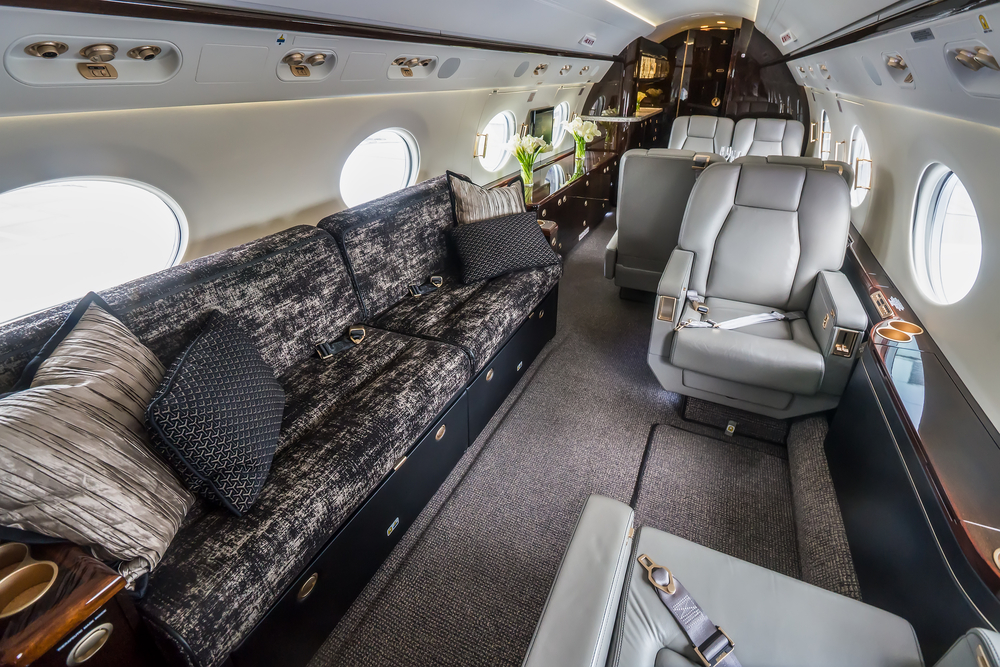
Jet buyers are voting with their wallets
“I’m of the opinion that interiors sell airplanes,” said Bombardier CEO Éric Martel at a recent BizAv conference. Martel’s company is one of many prioritizing cabin design and interior innovation as key value propositions for buyers. This emphasis is apparent in the design of jets like the Challenger 3500, which boasts the widest cabin in the super midsize jet class and zero-gravity Nuage seating.
Bombardier isn’t the only airframer to recognize the importance of cabin space. Gulfstream’s latest G400 and G700 both feature innovations to allow passengers to maximize available space and comfort. Features include ergonomic seats that convert into beds, multiple configurable living areas, and compartmentalized storage.
Comfort goes beyond offering additional space. Embraer, for example, has enhanced the appeal of jets, like its Praetor 500, with premium amenities, such as HEPA air filtration. Dassault, on the other hand, is offering a combination of noise cancellation and high-fidelity entertainment audio to create an atmosphere of comfort in its jets, including the Falcon 8X.
While these jets enhance comfort in different ways, they all have one thing in common. They’re bestsellers in their classes — and stars in their airframers’ respective portfolios. The message is clear: Flyers value comfort.
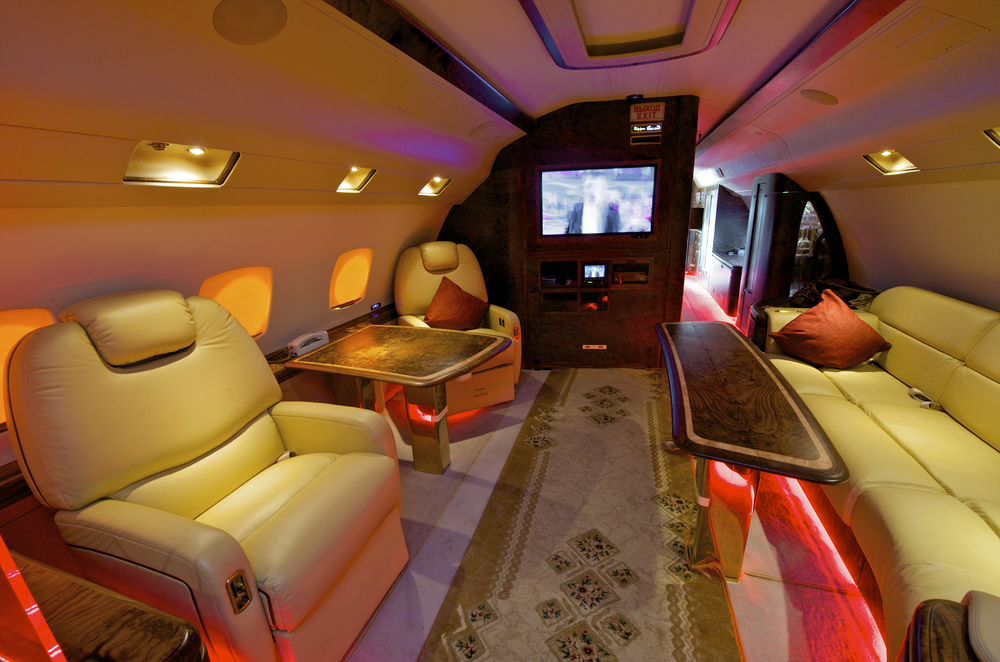
The best of all worlds
Range and comfort aren’t mutually exclusive variables. Ideally, they will coexist with speed to drive success in the private aviation market. Short or long range, no matter the flight time, private flyers demand high standards of comfort and convenience. A well-designed cabin is half the experience — and a smooth, efficient flight is the other half. To distinguish their jets, airframers must focus on delivering the best of all worlds.
In 2020, demand for jet fuel suffered a pandemic-related plummet. Air travel took a major hit — with less fuel required by major airliners and private jet operators alike. Jet fuel isn’t cheap, so even with the return to air travel, many airports and refueling facilities are taking a conservative stance to restoring the pipeline.
The result? Jet fuel shortages blight air travel at hubs around the country. And while they’re unlikely to persist for long, they’re stalling our return to the skies in several ways.

Demand for jet fuel drops dramatically
At the beginning of the pandemic, air travel plunged 96%. Passenger carriers in the U.S. grounded 3,200 planes — more than half of the country’s fleet. The sudden decrease in flights resulted in a significant dip in jet fuel shipments — up to 70% less than in 2019 — as the pandemic hindered air travel throughout the country.
This year, reinvigorated demand for air travel has led to massive problems in the jet fuel supply chain. Pipelines only have a finite amount of line space, and other fuels, including gasoline, diesel, and heating oil are competing for space. It’s all supply lines can do to keep up with the meteoric rise in demand.

Problems persist as pipelines ramp back up
Supply chain issues, combined with a shortage of fuel truck drivers, has led to significant jet fuel shortages — especially in western parts of the country. Members of the trade group Airlines for America (A4A) are attempting to even out fuel shortages by carrying extra fuel on flights from unaffected origin airports to supplement fuel supply at destination airports suffering from the shortages.
While this is a short-term solution, pipeline capacities are set to increase as demand for air travel continues. Fuel shortages aren’t expected to last long. Major airlines expect to see pipeline relief as early as late August or early September. Once resolved, there’s opportunity for a stronger air travel resurgence, in commercial and private sectors.
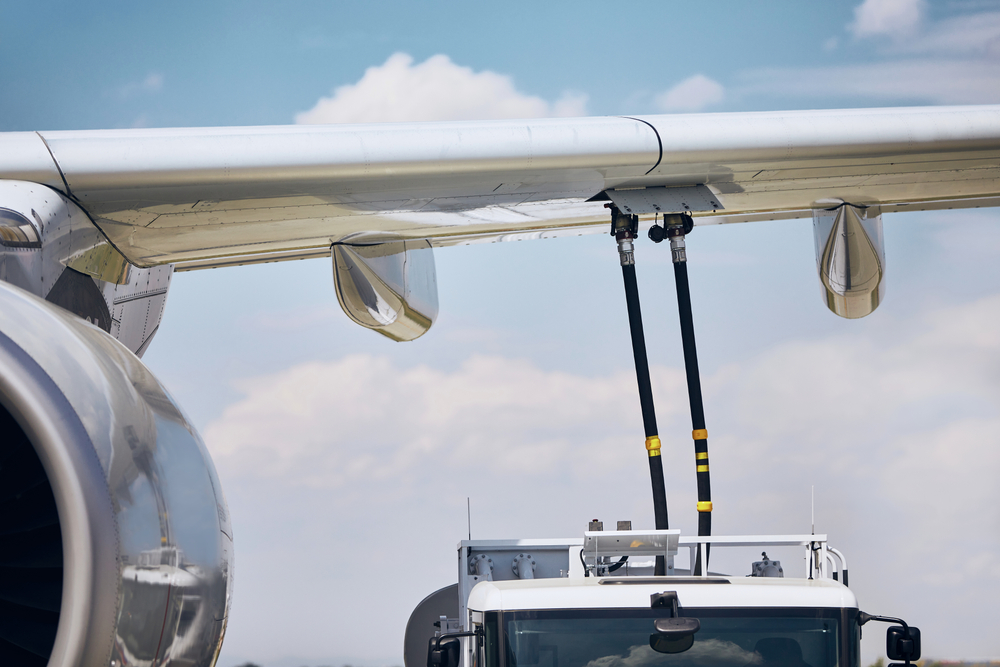
More opportunities for private operators
A protracted fuel shortage has potentially far-ranging effects on continued recovery for the aviation industry. As a pandemic-weary population yearns to travel, demand for flights is outpacing jet fuel supply. The imbalance is affecting both commercial and private operators — the former more than the latter.
As commercial air travel becomes more expensive — and finding seats more competitive than ever — private carriers are seeing an increase in demand. Opportunities for private jet operators have never been better. Demand for leisure travel is matching, and even exceeding, pre-pandemic levels on many routes.
With pent-up wanderlust fueling a return to the skies for leisure, business, and international travel, the surge in demand for private aviation will continue to persevere against headwinds.
The expert jet brokers at L & L International are here to help you acquire the perfect jet. Need to sell your jet? We can assist with that too.
Contact the private aviation professionals online, at
sales@L-Lint.com, or at
+1 (305) 754-3313.
By now, we all know the story of private aviation’s explosive growth at the outset of the pandemic. People around the world chartered jets to escape lockdowns, travel safely, and avoid commercial flight debacles. But as the numbers roll in and paint a picture of private aviation across 2020 as a whole, it becomes evident that its success goes far beyond a bump in traffic and charters. Private aviation dominated the pandemic year for a diverse array of reasons, and there’s no reason to think it won’t continue to in 2021.
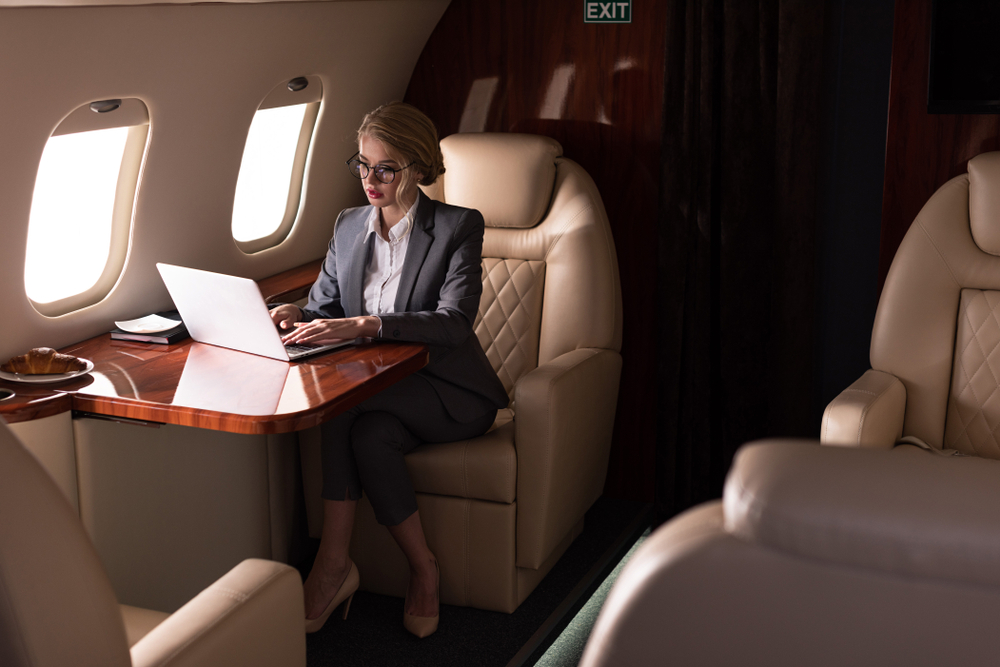
2020 was a year of highs and lows
The pandemic year was nothing short of a rollercoaster for private aviation. In the first quarter, private charters shot up as people sought to get back home amongst border closures and significant travel delays. Then, at the height of the pandemic, data from FlightAware shows that charter activity fell sharply as broad travel restrictions notched into place. Over the latter half of the year, charters rose steadily as people acclimated to the pandemic and pursued safer, non-commercial means of travel.
According to Business Insider, leisure travel was the surprising driver behind the late-year push in private charters — and the reason for the industry’s relatively great year. According to the report, “firms began shifting their efforts towards leisure flying even more after a McKinsey and Company study found that 90% of ultra-high-net-worth individuals don’t fly private, revealing an untapped market.”
All told, private aviation is weathering the pandemic far better than commercial aviation, which is still hemorrhaging losses.

Pandemic flights by the numbers
As data about 2020 finally congeals, it’s painting a picture that favors private jets — particularly business aviation (BizAv) flights. For example, while commercial airlines optimistically saw 50% flight volume in the latter half of the year, business charters during this same time period rebounded to between 85% and 90% of their 2019 volume.
Private jet memberships were an unexpected metric to trend upward during the pandemic. Bucking the idea that economic turmoil promotes conservative spending practices, NetJets reported three times as many new customers in the first three quarters of 2020 as it did for the same time period in 2019. Meanwhile, in July 2020 alone, private charter broker VistaJet saw a 320% increase in new memberships!
These figures are a window to an important trend that’s certain to manifest fully in 2021: people want convenience and they’re willing to pay for it. Already there’s been a shift to packaging private travel with resort deals or including jet cards with high-end luxury purchases. The pandemic may have stunted air travel as a whole, but it’s only made people more aware of the importance of convenience.
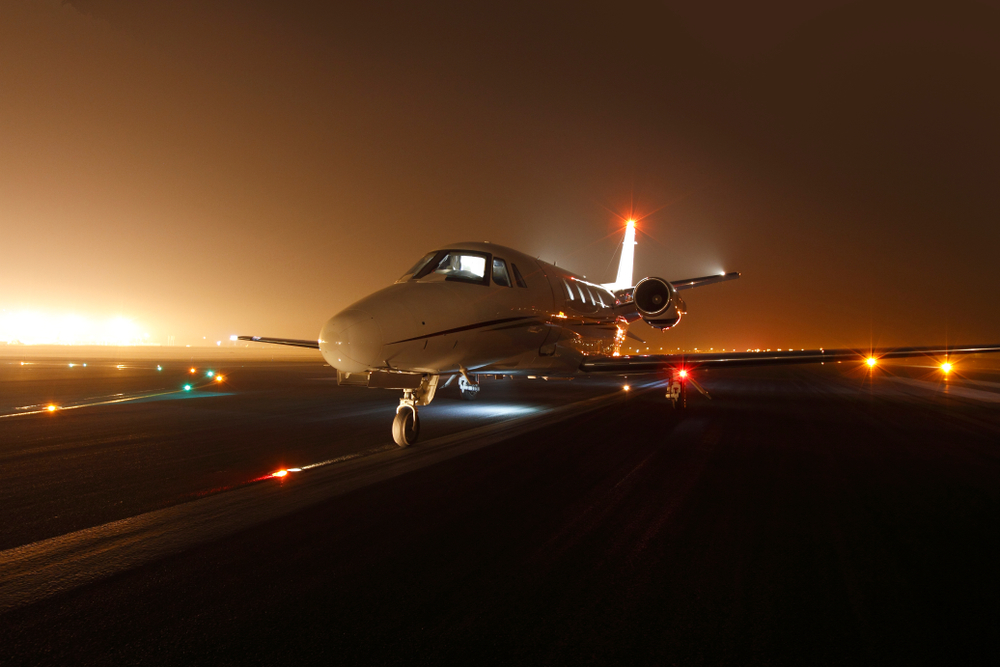
Private aviation continues to persevere
Charter data and memberships only tell one half of the triumphant year private aviation had amidst the pandemic. The delivery of Bombardier Global 5500 and Learjet 75 Liberty to customers shows the resolve of the industry to power forward. The agreement to open the Kansas Supersonic Transportation Corridor shows a commitment to the future.
Even more telling, the many mergers, acquisitions, and expansions in private aviation in 2020 show the workings of an industry that’s pivoting and positioning itself for success in spite of anything — global pandemics included.

In 2009, UberCab was founded. Fast forward a decade and Uber (NYSE:UBER) is a ubiquitous term for ride-sharing. The company has more than 22,000 employees worldwide and a market capitalization of $71 billion. Hailing a ride from a stranger is as easy as logging onto Uber’s app and paying a competitively priced fare. Uber has made it easier for customers to get where they need to go, but at the same time, initiated a downward spiral for traditional cab companies.
While the battle over cabs vs. Uber rages in the streets, business aviation companies smile knowing they’re protected from the same ride-sharing practices in the skies. For now.
Despite not being able to legally operate in the current aviation climate, Uber is gearing up for a piece of the BizAv market share. The company’s Uber Air segment is touted as the future of transportation — something to disrupt both air and ground modes of travel.
With a project launch date of 2023, what’s to stop Uber Air from doing to private aviation what UberCab did to taxi companies?
Is it even feasible?
The overwhelming takeover of ride-sharing by Uber wasn’t exactly a legal endeavor. Many cities and local municipalities around the world actually banned Uber from operating, only to have the company sneak in through backdoor channels. With enough money and a crack legal team, Uber’s strategy was a simple one: Become so integrated it’s impossible to force them out.
Uber’s strategy worked on the ground. What’s to stop them from asking forgiveness after an all-air takeover?
For starters, federally regulated airspace poses a much larger challenge to navigate than even major metropolitan streets. Without clearance from the Federal Aviation Administration (FAA), Uber Air can’t take to the skies at any altitude. Any attempt would mean flying in the face of certain government crackdown.
There’s also the question of appropriate airspace. Uber Air’s vision focuses on unmanned aerial vehicles (UAVs), which likens the company’s transport to drones, rather than manned aircraft — craft that operate at two distinct elevations. Early concepts liken the UAVs to helicopters and delineate the same minimum safe altitudes, but the unmanned nature of the vehicles still poses problematic in this airspace.
Finally, flying in cities is a hugely gray area. Everything from airspace to issues with noise abatement is uncertain.
There’s very little groundwork in place for Uber Air to take flight. Before common-use UAVs can hit the skies, the biggest obstacles are legislative, not technical.

How will it affect BizAv?
 BizAv stands to suffer less from the “Uberization” of the skies, thanks in large part to the nature of air travel. Uber Air is a regional solution to air travel — the company gives the example of San Francisco to San Jose in its early presentation. Without tremendous innovation, Uber Air can’t compete with the range and speed of regional flights, such as Dallas to Phoenix, Houston to San Francisco, or New York to Chicago.
BizAv stands to suffer less from the “Uberization” of the skies, thanks in large part to the nature of air travel. Uber Air is a regional solution to air travel — the company gives the example of San Francisco to San Jose in its early presentation. Without tremendous innovation, Uber Air can’t compete with the range and speed of regional flights, such as Dallas to Phoenix, Houston to San Francisco, or New York to Chicago.
Uber Air will also rely on “Skyports” to dock, refuel, and pick up passengers. While the company has early cooperation in building these ports, they fall short of the capabilities of even a small airfield.
It’s unlikely Uber Air will compete with BizAv on a meaningful scale, because that is not its intention. Uber Air is a continuation of local transportation disruption. For now, regional BizAv appears safe and remains the practical solution for private air travel.

Like many industries, aviation is looking to the internet of things (IoT) to lower costs, improve productivity, and revolutionize the industry. The IoT is internet connectivity within everyday objects, creating networks of sensor-equipped, intelligent devices that can gather data, interpret it, and then act on it.
IoT is already beginning to transform the aviation industry. A Deloitte survey found that two-thirds of airline leaders believe IoT offers clear benefits right now, 86% expect clear benefits within three years, and 37% have begun to explore and implement IoT solutions as a way of managing costs.
Private jet manufacturers are among those leading the charge for improving aviation with 5G wireless systems. Airbus joins Delta Air Lines, Sprint, OneWeb, and Airtel in the Seamless Air Alliance to bring air travel into the digital future.
Below are some of the ways IoT will improve the airline industry.
Seamless traveler experience
 Flights are much more likely to be on time once the industry switches to satellite navigation systems from radio and radar navigation systems. The Automatic Dependent Surveillance–Broadcast (ADS–B) system, a satellite navigation system, is already starting. Aircraft must have the necessary equipment fitted by 2020 in the U.S.; the 2017 deadline has already passed in Europe.
Flights are much more likely to be on time once the industry switches to satellite navigation systems from radio and radar navigation systems. The Automatic Dependent Surveillance–Broadcast (ADS–B) system, a satellite navigation system, is already starting. Aircraft must have the necessary equipment fitted by 2020 in the U.S.; the 2017 deadline has already passed in Europe.
“Smart” airports will enhance the passenger’s flight experience with more efficient check-in, security, and baggage processes using biometric passenger verification and luggage tracking. Dubai already offers automatic identification at its airport. Thanks to IoT advances, security systems will know when to expect travelers to arrive, aircraft will be on time, and ground transportation will be ready when the passenger arrives.
Enhanced routes
When aircraft are connected to each other and able to communicate, they will be able to take “free routes” instead of predefined flight paths while avoiding accidents. Software will allow the aircraft to calculate their flight trajectories and avoid each other. More aircraft will be able to take the shortest route to their destination, reducing travel time, fuel usage, and carbon emissions.
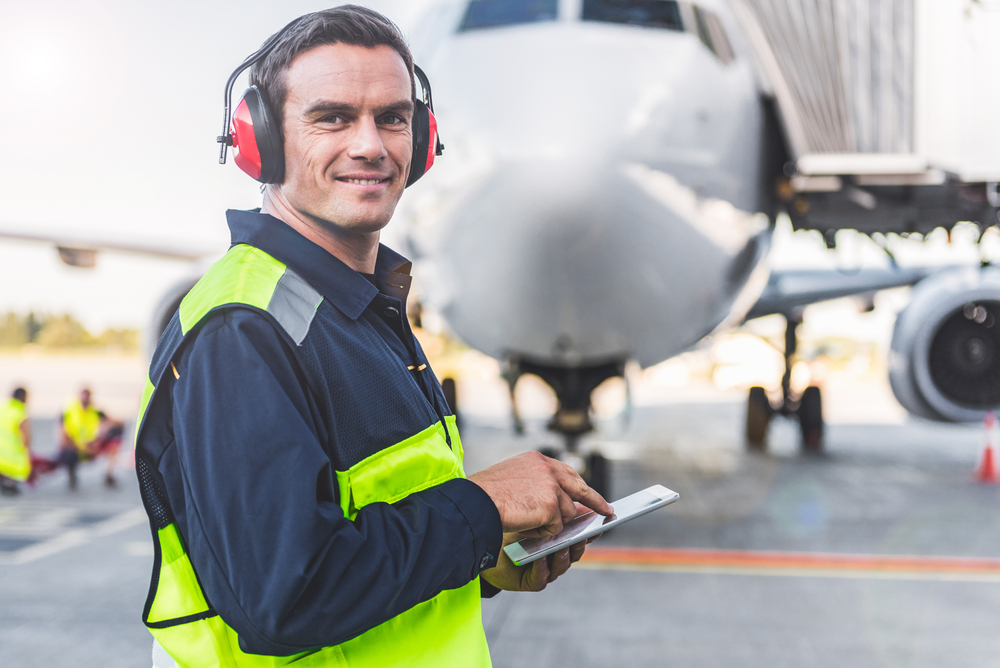
Safety becomes more efficient
A sample scenario featuring IoT: An aircraft recognizes mid-flight that a part is not functioning properly. The aircraft messages the ground that the part needs repair upon landing. A 3-D printer at the arrival airport receives the message and begins printing the part. A self-driving vehicle picks up the part and takes it to the aircraft upon landing. A mechanic already has the documents — available in the cloud — needed to repair the part, while an engineer virtually oversees the work. The aircraft departs for its next segment on time despite the repair.
More aircraft in flight
Air transportation is becoming an increasingly common way to travel, particularly in developing countries. As demand for flights increases, pilots will also be in greater need — unless flights become self-driving and rely less on human labor. Additionally, the rising number of aircraft committed to shipping and the increase in drones will lead to busier skies. The IoT will create better air traffic management systems for the increased number of airborne vehicles.
How often do you charter a private jet? For most business professionals, the answer is once or twice per year — usually in dire circumstances. Ask this same group how often they fly first class and the answer will be much more frequently. This shines a light on a common misconception: First class isn’t always a cheaper (or better) option than a private charter.

The misconception is an easy one to make. How could chartering an entire jet be more convenient or affordable than lounging in first class on a commercial flight? As it turns out, chartering a jet has become easier, more convenient, and more affordable in the past decade.
The rise of charter options
 Jet charters are easier to book than ever before. The availability of jet cards and competitive booking services have made a chartered flight just a few clicks away for most business professionals. In fact, revenue from chartered flights may top $33.8 billion by December 2020!
Jet charters are easier to book than ever before. The availability of jet cards and competitive booking services have made a chartered flight just a few clicks away for most business professionals. In fact, revenue from chartered flights may top $33.8 billion by December 2020!
Like ride-sharing has disrupted car transportation, the availability of chartered flights is disrupting air travel. The effects are similar: lower booking costs, widespread appeal, and more reasons to choose private transportation, rather than settle for public.
With the rise of charter options, the first and biggest variable affected is the number of first-class seats booked each year.
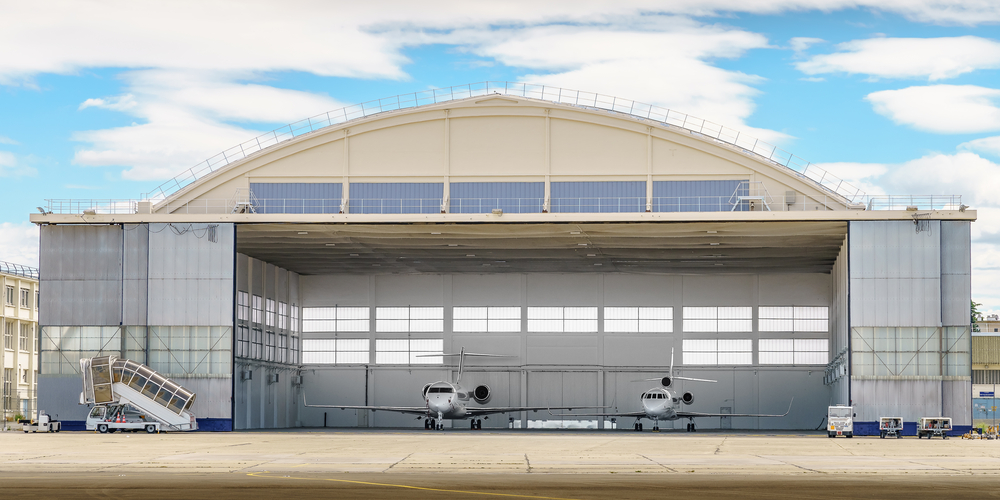
But what about the cost?
Trip cost is the first (and only) variable many people consider when booking a flight. And many times, even when a chartered flight is priced competitively, it suffers from the perception of luxury. People assume hidden fees and costs beyond what they can see.
Cost shouldn’t be the only variable a flier looks at! There are several other key variables that are just as important — variables heavily in favor of chartering a private jet:
- The convenience of a flight tailored around your schedule. Even first-class passengers are at the mercy of everyone else on a commercial flight. Chartered jets leave when you’re ready, dramatically reducing pre-travel time and stress.
- Speaking of reduced time, travel time itself goes down when you charter a flight. Private jets cruise to altitude much faster than commercial jets and speed to their destination at Mach .80 or .90.
- How much leg room are you getting in first class? It’s nothing compared to what you’ll get on a chartered jet. Plus, you’ll benefit from loads of other amenities no amount of money can buy on a commercial flight.
All these things contribute to the cost of a private charter. But instead of looking at cost alone, look at value. Consider that the cost of a first-class ticket is roughly one-third of a charter’s cost — then look at what you’re getting. Time, convenience, and luxury pay for themselves very quickly.
Also consider variables such as the number of people flying and when you’re booking a flight. Try booking four first-class tickets two days before a flight and compare that cost to a private charter! The difference in cost is likely to be marginal, with the benefits in favor of chartering.

Take to the skies in style
There’s a lot to love about flying first class. But it’s nothing compared to chartering a flight! Don’t assume a private charter is unrealistic for your travel plans until you truly stack up the variables. Remember, there’s a reason people buy private jets! The cost of air travel can add up fast if you’re always in the air, flying first class. Sometimes, the best solution is one tailored to your needs.
The expert jet brokers at L & L International are here to help you acquire the perfect jet. Need to sell your jet? We can assist with that, too.
Contact the private aviation professionals online, at
sales@L-Lint.com, or at
+1 (305) 754-3313.
When you step onto a private jet, you’re not likely holding a boarding pass. Instead, the key to the sky on a private charter is a jet card. And with the rise in private aviation accessibility, custom jet cards are quickly becoming the hot new trend. What’s all the rage about? For frequent fliers, a custom jet card is a great way to get what you want, when you want it.

A quick history
Jet cards became a necessity at the inception of brokered chartering. Because each charter involved different fees and rates, jet cards were introduced as a way to simplify things. And because chartering a flight can involve as many as 60+ different variables, jet cards were a quick way to set terms for holders. Simply put: They set fixed hourly rates and concrete terms.
Fast forward to today, and there’s an abundance of jet cards, offered by different broker services. Over 250 of them, actually! All of them operate roughly the same, with minor variations in how they’re used — for example, prepaying for hourly rate discounts versus jet-specific cards or cards valid for specific seating.
Now, the next iteration of jet cards seems to be upon us. Frequent fliers are buying cards that give them the options they want, the flexibility they need, and a value that’s too good to pass up.
Everything’s better when it’s custom
The custom jet card really made its debut in 2018, when industry leaders like Air Charter Service, DashJet, Jet Algo, and Prive Jets launched customizable programs. Each of the programs is generally similar, but thanks to customer-centric customization options, there are a wealth of possibilities for each. Some of the variables up for negotiation include:
- Guaranteed availability
- Fixed rates based on cost or usage
- Custom service area rates
- Lead time discounts
- Fixed-rate charters and legs
Depending on how or where you fly, a custom jet card can be well worth the investment. And what an investment it might end up being! Depending on the variables you want to haggle over, custom cards can range between $20,000 and $150,000.
For someone who flies frequently, knows their schedule in advance, or charters the same route over and over, a custom jet card will likely pay for itself. For those with unpredictable flight schedules, choosing an available jet card may be the smarter option.

Pay close attention to what you’re getting
 Because there are so many options available when it comes to charters, customizing a jet card can be a gamble if you don’t know exactly what you need. Here are a few critical aspects to consider when customizing a card:
Because there are so many options available when it comes to charters, customizing a jet card can be a gamble if you don’t know exactly what you need. Here are a few critical aspects to consider when customizing a card:
- What type of jet do you need? Some cards may not cover turboprops or only cover super-midsized cabins.
- Who has your money? Look for card providers that utilize an escrow account instead of taking your funds up front.
- Fixed hourly rates or dynamic pricing? If you fly into areas with frequent delays or inclement weather, dynamic pricing may be smarter.
- Do you need availability on short notice? Paying more for a custom card may not be worth it unless you’re guaranteed availability.
- Where are you flying? If you have a primary service area, a custom jet card may be worth the cost of locking down a low fixed rate.
There are many variables to consider before purchasing a custom jet card. Consider them all and start doing some math to see if things add up in your favor.
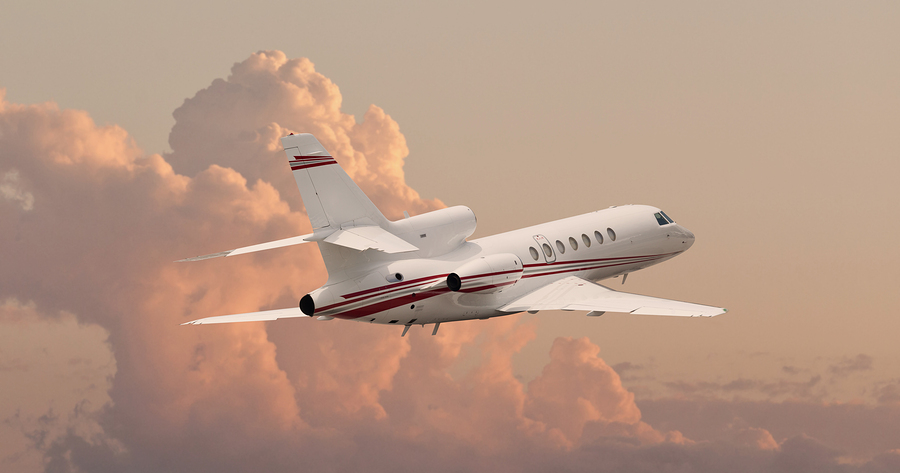
Much like the shift to SUVs in the automotive industry, super-midsized jets are quickly rising to prominence within private aviation. These jets are sleeker, more efficient, and more luxurious than other models, offering the perfect mix of style and practicality for business and pleasure. And, since manufacturers have taken note, it’s a trend that looks to continue with the arrival of several enticing new super-midsized jets in 2019 and beyond.
The trend of super-midsized cabins
Thanks to the immense popularity of jets like the Bombardier Challenger 300, Cessna Citation X, and Falcon 2000S from Dassault, super-midsized cabins are in demand. In a recent 10-year forward-looking forecast for business aviation, industry experts believe this demand will gain steam. They’re looking at how manufacturers are already approaching their next big releases.
Companies such as Embraer have announced new super-midsized models (Praetor 500 and 600) to capitalize on their bestselling Legacy 450 and 500 super-midsized jets. Textron Aviation is also following suit with new options on their super-midsized 325 Citation Longitude business jet. More super-midsized announcements are expected to follow.
The trend is a mixed bag, according to forecasters. While many jet owners want the efficiency of a super-midsized jet, others cite larger cabins as a primary demand. The data also supports this. According to the forecast, as many as 32% of total units delivered over the next decade could fit the mold of larger jets.

Why such demand?
Super-midsized jets are the best of all worlds. They offer better fuel economy and faster charter times than large jets, with more amenities and spaciousness than small jets. They offer sublime luxury, alongside practical amenities. With transcontinental capabilities, few domestic destinations are too far for a super-midsized jet.
- The average occupancy of a super-midsized jet is nine people, comfortably.
- Flight times of up to nearly eight hours are capable, though usually much less.
- The average super-midsized jet has roughly 112 square feet of baggage space.
- Entertainment systems and Wi-Fi are standard on most models.
While all these benefits are key drivers for the super-midsized class, they’re not the only reason for a surge in popularity. As flight sharing and private charters climb into the spotlight, super-midsized jets are the most economical choice for domestic charters. This fact is one of the core reasons for a boon in upcoming super-midsized models.
The future is super-midsized
 The focus on super-midsized jets stretches back to 2015, with the successful launch of the Cessna Latitude and Embraer Legacy 450. Since then and looking into the future, super-midsized jets are the clear market leaders:
The focus on super-midsized jets stretches back to 2015, with the successful launch of the Cessna Latitude and Embraer Legacy 450. Since then and looking into the future, super-midsized jets are the clear market leaders:
- Cessna Citation Hemisphere (on hold, expected 2019)
- Bombardier Global 5500 and 6500 (expected 2019)
- Bombardier Global 8000 (expected 2019)
- Gulfstream G500 and G600 (expected 2019)
- Embraer Praetor 500 and 600 (expected 2019-2020)
- Dassault Falcon 6X (expected 2022)
The shift to super-midsized and larger is imminent within the private aviation industry, as evidenced by the lineup over the next year and beyond. This isn’t to say that light and heavy jet classes will disappear. The focus will simply remain on the in-between: super-midsized jets that offer fliers a little bit of both worlds.
The expert jet brokers at L & L International are here to help you acquire the perfect jet. Need to sell your jet? We can assist with that, too.
Contact the private aviation professionals online, at
sales@L-Lint.com, or at
+1 (305) 754-3313.




















